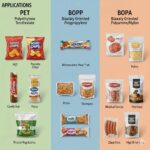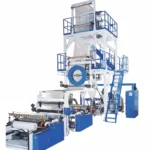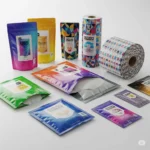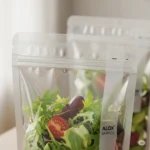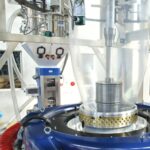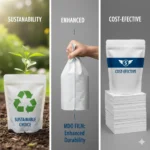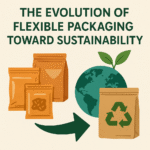Today flexible packaging play major role to reducing food waste. One of the most effective yet underappreciated tools in this mission is flexible packaging. With its ability to extend shelf life, enhance product protection, and reduce environmental impact, flexible packaging plays a crucial role in minimizing food waste from farm to fork.
What is flexible packaging.
Flexible packaging refers to materials that are easily shaped or bent without losing their structural integrity. It includes bags, pouches, wraps, and films made from plastic, foil, or paper. Unlike rigid packaging, such as glass jars or metal cans, flexible packaging adapts to the shape of its contents and requires significantly less material to produce.
Its lightweight nature, durability, and customization capabilities make it ideal for a variety of food products, from snacks and frozen foods to dairy and ready-to-eat meals.
The Global Food Waste Crisis
According to the Food and Agriculture Organization (FAO) of the United Nations, roughly one-third of all food produced globally is wasted each year. That equates to approximately 1.3 billion tons of food, worth nearly $1 trillion. This waste occurs at every stage of the supply chain—during production, processing, transportation, retail, and consumption.
The environmental impact of food waste is equally alarming. Wasted food contributes to 8-10% of global greenhouse gas emissions. It also squanders valuable resources like water, land, and energy used in food production. Therefore, reducing food waste is essential not only for food security but also for environmental sustainability.
How Flexible Packaging Helps Reduce Food Waste
1. Extended Shelf Life
One of the most significant benefits of flexible packaging is its ability to preserve food freshness for longer periods. Advanced barrier properties help protect food from oxygen, moisture, UV light, and contaminants. This means perishable items like meat, cheese, and produce can stay fresh longer, giving consumers more time to consume them before they spoil.
Modified Atmosphere Packaging (MAP) and vacuum sealing, commonly used with flexible materials, further reduce microbial growth and oxidation, significantly delaying spoilage.
2. Portion Control and Reseal ability
Flexible packaging often includes features like resealable zippers, spouts, and easy-tear openings, allowing consumers to use what they need and safely store the rest. This reduces the likelihood of spoilage after opening, particularly for snacks, dried goods, and frozen items.
Single-serving packs also enable portion control, reducing the chance of over-purchasing and food waste in households and on-the-go scenarios.
3. Reduced Product Damage
Flexible materials are durable and resistant to punctures and breakage. Unlike glass or rigid containers, flexible packaging can withstand the rigors of transportation and handling without damaging the food inside. Less product damage means fewer returns, reduced waste in retail environments, and improved customer satisfaction.
4. Optimized for Efficient Distribution
Because flexible packaging is lightweight and compact, it reduces transportation costs and fuel usage. More products can be packed per shipment, decreasing the carbon footprint and improving supply chain efficiency. Efficient logistics help ensure that food products reach consumers faster and in better condition, minimizing spoilage during transit.
5. Smart Packaging Innovations
Emerging technologies in flexible packaging include intelligent packaging features such as freshness indicators, time-temperature sensors, and QR codes. These tools provide real-time information about a product’s condition, helping consumers make informed decisions and avoid discarding food that is still safe to eat.
Benefits for Stakeholders Across the Supply Chain
– Farmers and Producers
Flexible packaging helps reduce post-harvest losses by preserving quality during storage and transportation. By extending shelf life, producers can reach broader markets and avoid financial losses associated with spoilage.
– Retailers
Stores benefit from longer-lasting inventory and reduced shrinkage (loss of product due to spoilage or damage). Attractive and informative packaging also enhances merchandising and boosts sales.
– Consumers
Longer shelf life, convenience, and resealability empower consumers to reduce food waste at home, save money, and enjoy fresher food for longer periods.
– Environment
By curbing food waste, flexible packaging indirectly reduces methane emissions from landfills and conserves the resources used to grow and process food. Though not always recyclable, many flexible packaging materials are evolving to be more eco-friendly, contributing to circular economy goals.
Addressing Concerns About Flexible Packaging
A common criticism of flexible packaging is its reliance on plastics, which can pose environmental challenges if not properly managed. However, the net environmental impact of food waste is often far greater than the impact of packaging.
Moreover, the packaging industry is innovating rapidly. Recyclable, compostable, and bio-based flexible packaging options are emerging, supported by improved waste management infrastructure and circular economy initiatives.
Organizations such as the Flexible Packaging Association (FPA) and Sustainable Packaging Coalition (SPC) are working with manufacturers to promote responsible packaging solutions that balance functionality with environmental stewardship.
Case Studies: Real-World Impact
Several real-world examples highlight how flexible packaging has successfully reduced food waste:
- Fresh produce in resealable pouches: Retailers using flexible pouches for fruits and vegetables report significantly less in-store waste due to enhanced freshness and protection.
- Cheese in vacuum-sealed packs: Vacuum-sealed flexible packaging has extended the shelf life of cheese products by up to 50%, reducing spoilage and returns.
Pet food in multi-layer pouches: Flexible pouches with high barrier layers preserve pet food flavor and nutrients, decreasing the likelihood of early spoilage.
The Future of Flexible Packaging in Waste Reduction
As consumer awareness grows around sustainability and food waste, the demand for innovative packaging solutions will continue to rise. Flexible packaging is uniquely positioned to lead this movement due to its adaptability, cost-effectiveness, and proven ability to reduce food loss.
Future trends may include:
Integration with digital tracking to reduce supply chain inefficiencies
Increased use of biodegradable and compostable materials
Growth in recyclable mono-material flexible packaging
Expansion of smart packaging technologies
Conclusion
Flexible packaging is more than just a modern convenience—it’s a vital tool in the global fight against food waste. By extending shelf life, enhancing product protection, and enabling efficient distribution, it plays a transformative role across the food supply chain. While challenges remain, particularly regarding end-of-life recycling, the benefits of reduced food waste and improved sustainability make flexible packaging a key player in building a greener, less wasteful future.
Thank you

